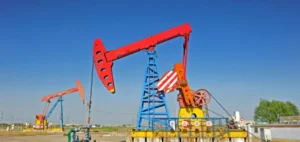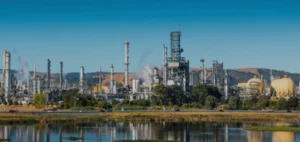Global oil demand is expected to see significant growth in 2025, reaching an additional 1.21 MMb/d, according to the report published by the **King Abdullah Petroleum Studies and Research Center (KAPSARC)**. This report, based on economic and geopolitical projections, highlights the contrasting roles of India and China in this growth. India, in particular, is projected to record a demand increase of 220 Kb/d, while China closely follows with 210 Kb/d. Together, these two nations exemplify the shifting dynamics of the global oil market.
Asia’s Demand Still Leads the Way
Asia continues to dominate global energy demand growth, accounting for 640 Kb/d of the projected increase in non-OECD regions. India, the primary driver of this growth, benefits from a robust economy and heightened energy needs in its agricultural and industrial sectors. Diesel remains the cornerstone of this demand, with a projected increase of 120 Kb/d, supported by the “Rabi” agricultural season. Liquefied petroleum gas (LPG), used for both domestic and industrial purposes, is also expected to grow by 50 Kb/d. Other fuels, such as gasoline and heavy fuels, will see more modest growth, ranging from 10 to 20 Kb/d.
China, while still a major player, faces economic slowdown marked by structural reforms and a debt restructuring plan worth 14.3 trillion RMB (1.97 trillion USD). This context has led to a more moderate growth projection of 210 Kb/d for 2025. The petrochemical and transport sectors are expected to drive demand, while the construction sector’s slowdown limits diesel needs.
Global Dynamics Shaped by Non-OECD Regions
KAPSARC’s projections indicate that non-OECD countries will play a dominant role in global oil demand growth in 2025 and 2026. These nations will account for 90% of the anticipated increase in 2025. Alongside India and China, the Middle East (200 Kb/d), Africa (120 Kb/d), and Latin America (110 Kb/d) contribute to this dynamic, driven by rapid urbanization, population growth, and sustained industrialization.
In OECD countries, the situation is more varied. Demand is expected to grow modestly by 120 Kb/d, primarily driven by the Americas (+140 Kb/d). Conversely, Europe and OECD Asia will see respective declines of 20 Kb/d and 10 Kb/d, reflecting energy transition efforts and economic constraints, particularly in Europe, where refinery closures and environmental regulations limit consumption.
The Impact of OPEC+ Policies on Global Supply
On the supply side, OPEC+ has extended its voluntary production cuts until March 2025, resulting in a reduction of 50 Kb/d in the first quarter. This strategy aims to stabilize oil markets amidst geopolitical and economic uncertainties. However, non-OPEC+ producers are expected to offset this decline, with an estimated growth of 1.27 MMb/d in 2025. The United States, with an increase of 125 Kb/d, and China, with 110 Kb/d, are among the key contributors.
Projections also indicate a global surplus of 350 Kb/d in 2025, which could exert downward pressure on oil prices. However, factors such as geopolitical tensions and purchases for Strategic Petroleum Reserves (SPR) may mitigate this impact. OPEC+ also holds significant spare capacity, estimated at 4.3 MMb/d in 2025, offering flexibility in case of supply shocks.
Geopolitical and Economic Challenges
Global oil market prospects for 2025 remain closely tied to geopolitical developments. Ongoing conflicts in Ukraine and the Middle East continue to weigh on markets, as do rising protectionist policies in many countries. Additionally, monetary adjustments, including interest rate cuts in the United States and Europe, are expected to stimulate economic activity and support oil demand.
However, economic uncertainties persist, particularly in China, where slowing growth could limit energy demand expansion. Projections from the International Monetary Fund (IMF) estimate global growth at 3.2% in 2025, while Oxford Economics predicts a more modest increase of 2.85%.
Medium-Term Outlook
Despite challenges, the medium-term outlook for the oil market remains positive. Global demand is expected to continue growing in 2026, with a projected increase of 1.23 MMb/d. This growth will once again be dominated by non-OECD countries, with Asia accounting for the majority of the expansion.
In this context, India and China will continue to play central roles, supporting global demand in an environment shaped by energy transitions, geopolitical tensions, and economic uncertainties. OPEC+, for its part, will need to maintain a delicate balance between managing supply and responding to demand fluctuations.






















